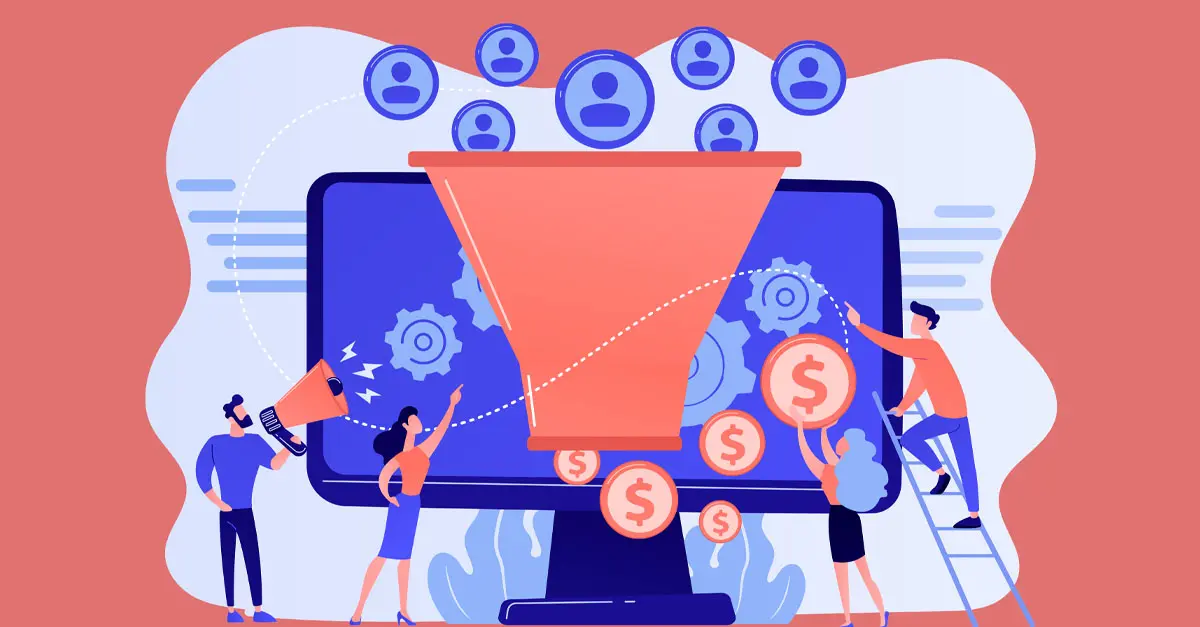
Introduction
In today’s competitive digital marketplace, marketers and entrepreneurs constantly look for ways to streamline customer acquisition. One powerful framework that often stands out is the sales funnel. So, what is a sales funnel? Simply put, it is a strategic model that illustrates the journey potential customers take from the first interaction with your business to the final purchase decision. Understanding how this process works can significantly improve your sales outcomes, increase engagement, and boost long-term revenue.
Why You Should Care About the Sales Funnel
First and foremost, let’s answer the fundamental question: why is this important? A well-designed sales funnel acts as a map, helping you guide prospects toward conversion. Instead of pushing everyone into the same generic pitch, a funnel allows you to customize your messaging and actions at each stage.
Additionally, it helps you identify exactly where leads drop off, so you can adjust and optimize your approach. Businesses that leverage sales funnels correctly not only convert more leads but also build lasting relationships and reduce acquisition costs.
The Four Key Stages of the Sales Funnel
To fully understand what is a sales funnel, we must break down its main components. Most funnels follow a four-stage model:
1. Awareness (Top of the Funnel – TOFU)
This is the very first point of contact between your brand and a potential customer. Your audience becomes aware of your existence through SEO content, blog posts, social media, paid ads, or referrals.
At this stage, your goal is not to sell, but to educate and engage. Focus on solving a problem or answering a question your audience has. The more value you provide early on, the better your chances of moving the lead to the next stage.
2. Interest (Middle of the Funnel – MOFU)
Once the prospect is aware of you, it’s time to spark their curiosity. They want to know more. Perhaps they subscribe to your newsletter, read your case studies, or download a guide.
Here, your job is to build trust and connection. Share testimonials, behind-the-scenes insights, or product features that highlight your unique value proposition. Importantly, continue nurturing with helpful, non-pushy content.
3. Decision (Bottom of the Funnel – BOFU)
Now, the lead is seriously considering making a purchase. This is the decision phase, and your offer must shine. Why should they choose you over a competitor?
Offer comparison charts, free trials, discount codes, or live demos to close the deal. A clear call-to-action and an intuitive checkout process are vital here. Remember, even a small hesitation can send them elsewhere.
4. Action (Purchase & Post-Purchase)
This is where the magic happens the lead takes action and becomes a customer. But don’t stop there! A strong sales funnel includes a post-purchase strategy.
Encourage reviews, referrals, and upsells. Loyal customers are your best promoters, and retention costs far less than acquisition. Offer loyalty programs, personalized follow-ups, and continued support to extend lifetime value.
Benefits of Using a Sales Funnel
Once you grasp what is a sales funnel, the benefits become crystal clear:
- ✅ Improved lead qualification and segmentation
- ✅ Increased conversion rates
- ✅ Better forecasting and pipeline visibility
- ✅ Efficient marketing spend
- ✅ Automated nurturing processes
In short, a funnel transforms chaotic marketing into a structured system with measurable impact.
Common Sales Funnel Mistakes to Avoid
Despite the clear structure, many businesses fall into common pitfalls. Avoid these to keep your funnel effective:
- ❌ Ignoring the awareness stage
- ❌ Sending the same message to every lead
- ❌ Not following up post-purchase
- ❌ Poor mobile optimization
- ❌ Using vague or weak CTAs
Fixing these mistakes alone can dramatically increase your ROI.
Sales Funnel vs. Marketing Funnel
While they sound similar, a sales funnel focuses on converting leads into customers, whereas a marketing funnel aims to attract and nurture potential leads through brand awareness and content. The two often overlap and support each other, but your focus will shift depending on your business stage and goals.
Sales Funnel Tools You Can Use
To implement a funnel successfully, consider these tools:
- Email Automation (e.g., Boost Inbox, Mailchimp)
- CRM Platforms (e.g., HubSpot, Salesforce)
- Landing Page Builders (e.g., Leadpages, Unbounce)
- Analytics Tools (e.g., Google Analytics, Hotjar)
These tools allow you to automate and optimize every step of the journey.
Conclusion
So, what is a sales funnel? It’s a powerful framework that guides potential customers through a journey from discovery to decision. By aligning your content, communication, and strategy with each funnel stage, you build trust, drive conversions, and ultimately, grow your business. If you haven’t yet mapped out your funnel, now is the perfect time to start. Your future customers are already on a journey make sure you’re there to lead them.